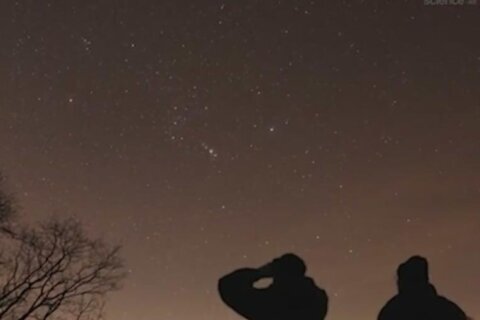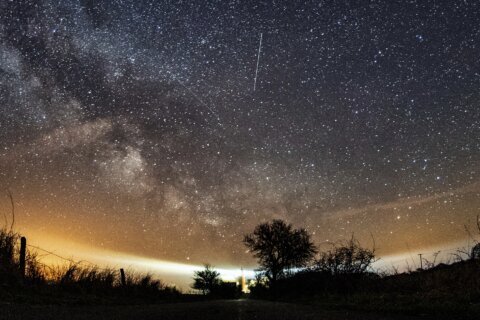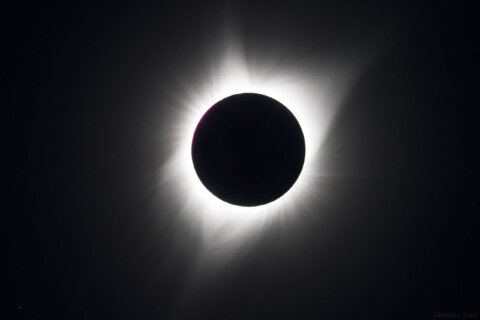New images are shining a spotlight on a game of fetch that’s out of this world. Astronomers have captured the most detailed observations yet of the asteroid 216 Kleopatra — an asteroid with two moons that just happens to look a lot like a dog bone.
The new observations were made using the European Southern Observatory’s Very Large Telescope in Chile, and the sharp clarity of the images has helped scientists learn more about the mass and 3D shape of the asteroid. This information could shed more light on how the asteroid and its two moons formed.
At its closest to Earth, Kleopatra is 124 million miiles (200 million kilometers) away.
Two studies including the observations published Thursday in the journal Astronomy & Astrophysics. Once focused on the shape of the asteroid, while the other looked more closely at the asteroid’s mass, as well as its moons.
“Kleopatra is truly a unique body in our Solar System,” said Franck Marchis, lead study author of the 3D shape study, in a statement. “Science makes a lot of progress thanks to the study of weird outliers. I think Kleopatra is one of those and understanding this complex, multiple asteroid system can help us learn more about our Solar System.”
Marchis is a senior planetary astronomer at the SETI Institute in Mountain View, California, and is also affiliated with the Laboratoire d’Astrophysique de Marseille, France.
The unusually shaped asteroid is located in the main asteroid belt between Mars and Jupiter and orbits the sun. Radar observations made of Kleopatra 20 years ago revealed its shape: two lobes that are connected by a thick neck.
Marchis and his team discovered two small moons orbiting the asteroid in 2008, and they were named AlexHelios and CleoSelene, after Cleopatra’s children.
Instruments on the Very Large Telescope captured images of Kleopatra between 2017 and 2019. This enabled astronomers to see Kleopatra and its moons from different angles to get a better grasp of its 3D shape. The scientists determined that one of the asteroid’s lobes is larger than the other. And it’s about 167 miles (269 kilometers) long — which adds up to about half the length of the English Channel.
Researchers also used the observations to better understand the orbits of Kleopatra’s two moons.
“This had to be resolved,” said Miroslav Brož, author of the moons study and researcher at the Astronomical Institute at Charles University in the Czech Republic, in a statement. “Because if the moons’ orbits were wrong, everything was wrong, including the mass of Kleopatra.”
The latest moon study’s findings allowed the researchers to determine how the asteroid’s gravity influences the movements of the moons. The astronomers were also able to calculate the asteroid’s mass, which is 35% lower than previously estimated.
Kleopatra’s density is less than half that of iron, which means that while the asteroid is likely metallic in composition, it’s probably a porous rubble-pile asteroid. Rubble-pile asteroids are a cluster of space rocks held together by gravity and they usually form after as pieces reaccumulate after a massive impact, like a larger asteroid being hit by another space rock.
The fact that Kleopatra is a rubble-pile asteroid could also explain why it has two moons. The asteroid rotates so quickly that it’s possible for material to lift off the surface if Kleopatra gets hit or clipped by anything — even something small. Chunks could have broken off of Kleopatra in the past, forming the AlexHelios and CleoSelene moons.
The European Southern Observatory’s Extremely Large Telescope (ELT), expected to begin observations from Chile in 2027, could provide even more detail about the oddball asteroid.
“I can’t wait to point the ELT at Kleopatra, to see if there are more moons and refine their orbits to detect small changes,” Marchis said.
The-CNN-Wire
™ & © 2021 Cable News Network, Inc., a WarnerMedia Company. All rights reserved.







